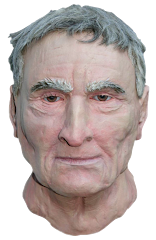 When I joined the Brothers in 2008 my main aim or focus was to be a Brother, nothing else .Then I met these senior brothers, we call them formators, who told me “don’t even think of becoming one, think of realizing your vocation, be open with yourself.” Eh? This was cruel wasn’t it? What I learned they were putting across for me was to be transparent with myself. No, no! Excuse me here, let me pronounce the word aloud let it fill the air with noise, and my soul with its meaning, because in it there is health and life, spirit and innocence.
When I joined the Brothers in 2008 my main aim or focus was to be a Brother, nothing else .Then I met these senior brothers, we call them formators, who told me “don’t even think of becoming one, think of realizing your vocation, be open with yourself.” Eh? This was cruel wasn’t it? What I learned they were putting across for me was to be transparent with myself. No, no! Excuse me here, let me pronounce the word aloud let it fill the air with noise, and my soul with its meaning, because in it there is health and life, spirit and innocence.Transparency, whatever it is perceived to be let it be, whatever I think of it let it be known, whatever I feel about it let it be felt. Yes, to be transparent with one’s self is to face reality which keeps on knocking at our door whenever we are with our inner selves.
At my personal level, transparency with myself helps me to understand the Nicholas in me; hence I’m able to understand my companions. It is better if I cry once in truth than if I laugh a thousand times with lies. The hard nut to crack here is this: it takes courage to let myself be myself as  I am more than I let myself see myself and be seen by others.
I am more than I let myself see myself and be seen by others.
This lesson: the reward of the transparency is the peace of mind just as contemplation brings peace to mind. Truth alone gives rest to our hearts, transparency brings self identity.
 I am more than I let myself see myself and be seen by others.
I am more than I let myself see myself and be seen by others.This lesson: the reward of the transparency is the peace of mind just as contemplation brings peace to mind. Truth alone gives rest to our hearts, transparency brings self identity.
(Nicholas Linus K' Minandi)


























































